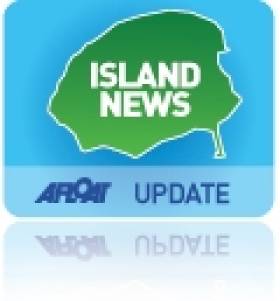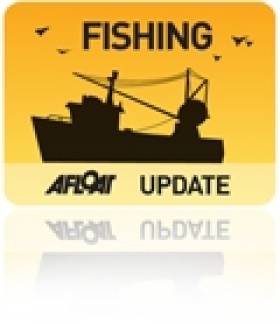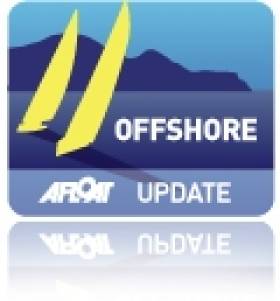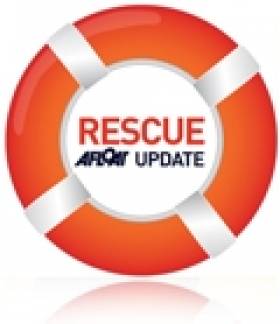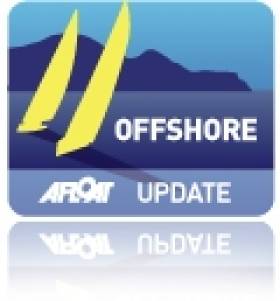Displaying items by tag: Aran Islands
Campaign Against Galway Bay Fish Farm Blasts PR Spend
#FishFarm - Bórd Iascaigh Mhara (BIM) has been blasted by campaigners against its proposed Galway Bay salmon farm for spending tens of thousands of euro on PR for the controversial project.
According to the Connacht Tribune, Galway Bay Against Salmon Cages described as "worrying" the more than €57,000 paid to PR firm Keating & Associates for "communications service", just one of various spends on private consultants totalling more than half a million euro.
The group also expressed concern over letter sent on behalf of BIM to the editors of national newspapers, citing them as an effort to "stifle debate".
However, BIM says the letters were issued "in order to address the publication of inaccuracies regarding BIM and the Galway Bay application".
It also defended the expenditure on consultants as normal operating costs, claiming it regularly hires outside expertise when needed.
Local groups opposed to the 500-hectare salmon farm off the Aran Islands – which would be largest aquaculture project of its kind in Europe – continue to wait for Marine Minister Simon Coveney to make a decision on BIM's licence application, which was originally promised before this summer.
The Connacht Tribune has more on the story HERE.
New Tender Cuts Funding To Aran Islands Air Service
#IslandNews - Aran Islanders have expressed concern over a new tender for the air link to the Galway Bay islands that could see a significant reduction in services.
As The Irish Times reports, the new tender for the public service obligation air connection has been capped at €900,000, representing a 30% cut.
And this "major downgrading" will inevitably result in restricted airport opening hours and a rise in fares, according to an Coiste leis an Seirbhís Aeir a Chosaint (the Save our Air Service committee).
The news comes a year after ferry visits to the Aran Islands were shown to have fallen by 20% – and just a few months after nine offshore island communities spoke out over Government plans to stop core funding for development.
The Irish Times has more on the story HERE.
Walker Breaks Leg In Aran Islands Cliff Fall
#IslandNews - A hillwalker in the Aran Islands was lucky to survive a 45-foot fall from a cliff top with only a broken leg, as The Irish Times reports.
The 21-year-old woman had been walking near the Wormhole on Inis Mór yesterday afternoon (Wednesday 8 April) when she was seen falling into the water.
A member of the local Irish Coast Guard unit said she was "very lucky" that whatever broke her fall meant she was spared more serious injury, or even death.
Local people walking in the area also went to her aid till she was airlifted to Galway for treatment.
The Irish Times has more on the story HERE.
Aran Islands House Showcased At World Architecture Fair
#InisÓirr - The Aran Islands might typify traditional Ireland for many at home and abroad.
But it may surprise you to learn that one of Ireland's most modern buildings can be found right at the entrance of Galway Bay on Inis Oírr.
Writing in The Irish Times, Gemma Tipton describes Brigid Keane's two-storey house on the island, with views across to the Cliffs of Moher, as "an excellent example of what a new generation of architecture might look like".
Indeed, the thoroughly forward-looking design, completed in 2013, has just been showcased at the BAU building and architecture fair in Germany – the place that provided inspiration for its unusual choice of material.
Poroton monolithic clay blocks are still a novelty in Ireland as an ecological building material, but in Germany they're "now a mainstream product" says architect Patti O'Neill.
And they're just the thing for this island's often rain-sodden climate, absorbing moisture without resulting in damp.
The Irish Times has much more on the story HERE.
BIM Won't Divulge Galway Bay Fish Farm Interested Parties
#FishFarm - Bord Iascaigh Mhara is keeping mum when it comes to naming who's expressed an interest in operating the controversial Galway Bay fish farm, according to the Connacht Tribune.
The fisheries board would only confirm than 21 investors and businesses have come forward with a view to running or funding the 500-hectare organic salmon farm off the Aran Islands, which would be the largest of its kind in Europe.
And that's raised the ire of Galway Bay Against Salmon Cages, one of the community groups opposed to the scheme, whose chairman Billy Smyth said: "They need to come clean and tell us who the 21 companies are."
He added: "This project would cost €70 million just to get started and there are very few salmon farm companies that would be in a position to finance that sort of capital investment."
As reported last month on Afloat.ie, Marine Minister Simon Coveney said a decision would be coming soon on whether he will give the go-ahead for the project.
The Connacht Tribune has more on the story HERE.
Sailor Who Sought Shelter In Aran Islands Completes His Voyage
#Offshore - Last October, a Canadian solo yachtsman made the news when he was taken in by the residents of Inis Mór in the Aran Islands after a tumultuous Atlantic Ocean crossing.
And now The Irish Times reports that Erkan Gursoy has received a hero's welcome upon arrival at his final destination of Turkey.
The 68-year-old retired teacher had sailed his self-built boat Altan Girl all the way from Vancouver, navigating the challenging Northwest Passage, before stormy weather slowed his progress towards Europe.
Contact with his vessel was lost for a short time, but Gursoy eventually made it to the safety of the Aran Islands with only minor damage sustained.
In the 10 days he spent in Galway Bay, he related to the locals even more of his lengthy adventure – including a collision off Greenland, and scaring away polar bears while stuck in ice in the far north of Canada.
But his homeland of Turkey beckoned, and after sailing most of winter away through the Mediterranean, Gursoy at last reached a marina in Istanbul this week.
“My wife said I had better go and get it out of my system, so we could then live out our lives,” he said of his epic near-10-month voyage.
The Irish Times has much more on the story HERE.
Aran Islands Fishermen Rescued Off Scotland
#Rescue - Five crew on an Aran Islands fishing trawler were rescued yesterday (Tuesday 20 January) after the vessel sank off Scotland's Outer Hebrides.
As BreakingNews.ie reports, the trawler Iúda Naofa began tanking on water some 48 miles off Lewis in the far north-west of Scotland.
Three of the five crew were airlifted to hospital for treatment for hypothermia while the others were evacuated to a nearby fishing boat also from the Aran Islands.
According to The Irish Times, the Iúda Naofa is owned by Mairtín Ó Conghaíle of Inis Mór.
Four of its crew are natives of the islands, the fifth being a Romanian national.
Northwest Passage Sailor Safe & Sound After Reaching Aran Islands
#Offshore - RTÉ News reports that the Canadian yachtsman slowed in his crossing of the Atlantic by last week's storm conditions has made landfall at the Aran Islands.
As previously reported on Afloat.ie, 67-year-old Erkan Gursoy had been looking forward to a pint once reaching his intended landfall at Dingle after an eventful few months solo navigating the Northwest Passage.
According to Independent.ie, his boat Altan Girl finally found its way to our shores yesterday (Sunday 26 October) after contact was lost for a short period.
The vessel was escorted by the Aran Islands RNLI to Inis Mór, having sustained minor damage in the storms.
And upon repairs, Gursoy may continue his solo voyage all the way to his native Turkey.
Possible 'Underground' Solution To Aran Islands Water Shortage
#AranIslands - 'Water, water everywhere, nor any drop to drink' has never been more true for residents of the Aran Islands who are facing their worst ever water shortage.
Now BreakingNews.ie reports on a call on Irish Water to tap into the newly discovered network of underground rivers believed to run beneath the islands and throughout Galway Bay to provide a lifeline for Aran's communities.
Tiernan Henry from NUI Galway's Earth and Ocean Sciences department says geological surveys for the freshwater aquifier systems believed to extend throughout the bay could lead to an invaluable source of fresh water for people on Inis Mean and Inis Oirr in particular, who have been forced to use water brought in from the mainland at great expense – around €1 per litre.
BreakingNews.ie has much more on the story HERE.
#CliffDiving - British diver Gary Hunt trounced the competition at the weekend's Red Bull Cliff Diving World Series leg at the 'Serpent's Lair' in the Aran Islands.
As previously reported on Afloat.ie, the extreme sports event was making its long-awaited return to Ireland after wowing the crowds on Inis Mór two years ago, bringing the cream of the world's cliff diving talent such as living legend Orlando Duque, who led the field after Saturday's qualifying round.
But it was Hunt who would triumph on the Sunday with an impressive series of dives, including the highest-scoring single dive of the day - erasing memories of his poor performance at the Aran Islands blowhole in 2012.
The win also means that Hunt is 150 points in the lead in the series standings as the crew head to Norway for the next leg of this year's championship tour.
Red Bull has much more on the story HERE.




























